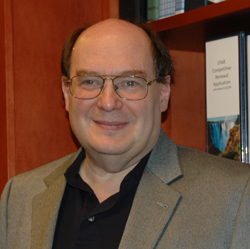Research Question
 Study lead author Dr. Jonathan KarnIn these reports we have highlighted many attempts at suppressing the latent HIV reservoir through a “shock and kill” approach. This involves activating dormant virus using latency-reversing agents so that HIV becomes susceptible to attack by the immune system.
Study lead author Dr. Jonathan KarnIn these reports we have highlighted many attempts at suppressing the latent HIV reservoir through a “shock and kill” approach. This involves activating dormant virus using latency-reversing agents so that HIV becomes susceptible to attack by the immune system.
An alternative approach is “block and lock” using latency-promoting agents (LPAs). The attempt here is to permanently suppress the ability of latent HIV to become activated by taking advantage of a normal cell process: gene silencing through chemical modification of genes. Drugs with sufficient potency and safety to accomplish this, however, have thus far been lacking.
Findings
It was already known that silencing of the HIV LTR—the region of the virus that kick-starts its own activation—involved chemically modifying its DNA by adding methyl groups. Inhibiting the proteins naturally responsible for removing those methyl groups might then be expected to keep HIV silent, regardless of the state of cell activation.
Fortunately, a drug called GSK-J4 was developed decades ago to treat—with limited efficacy as it turned out—certain leukemias, solid tumors, and parasitic infections. GSK-J4 was found to be a potential LPA because it strongly inhibited a key methyl-removing protein in HIV-infected cells.
Unexpectedly, GSK-J4 also induced methyl group addition on latent HIV DNA. Dr. Jonathan Karn of Case Western Reserve University and his team examined GSK-J4 in the test tube against latent HIV using cells infected in the test tube and other cells taken directly from HIV-positive people. GSK-J4 was highly effective in preventing latent HIV from being activated. Unfortunately, this silencing effect was short-lived and quickly reversed after removal of the drug.
Impact
The authors concluded that additional methods to enhance the process of adding methyl groups to latent HIV DNA must be explored, but “there remain formidable intrinsic barriers to achieving“ this goal.
amfAR’s Role
amfAR was a funder of this research.
Original Article
http://www.ncbi.nlm.nih.gov/pubmed/34673825
Dr. Laurence is amfAR’s senior scientific consultant.